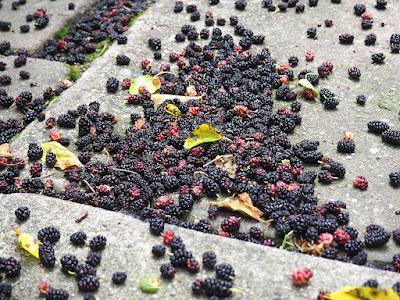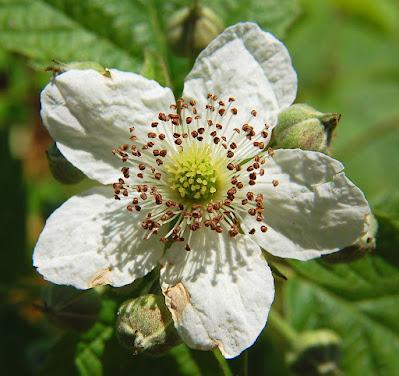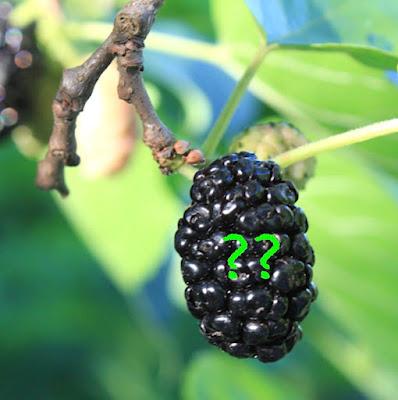
Geek alert! (ʘ‿ʘ)╯(photo modified from Flickr).
Continuing my exploration of the South Dakota sylva, this month's featured tree is the mulberry. Supposedly there are two species in the state, more on this later. The fruit is much more interesting.A mulberry looks a lot like a blackberry—enough so that the Wikipedia article on blackberries mentions mulberries. But blackberries are in the genus Rubus in the Rose Family, while mulberries are in the genus Morus in the Mulberry or Fig Family. And though the "berries" look alike, botanists who know them (as I now do) will tell you they are very different.
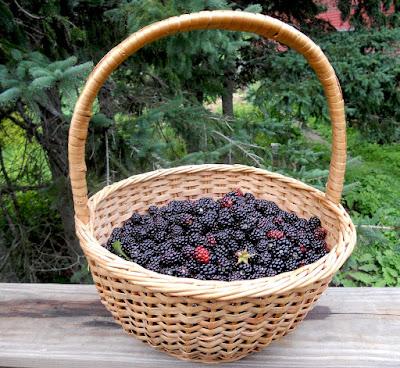
Wild blackberry harvest, by Gandydancer.
Fallen mulberries in peak season, by Awinch1001.
Botanically speaking (vs. grocery store produce classification) fruits develop from flowers, specifically the female sexual part(s). Pistil(s) containing ovules mature to become fruit(s) containing seeds. If we run this film backwards—i.e., reverse development—it becomes obvious how different mulberries and blackberries are.A blackberry consists of tiny fleshy seed-containing units called drupelets, making it an "aggregate fruit". If we run the film backward, we see that each drupelet started as one of many pistils in a single flower.
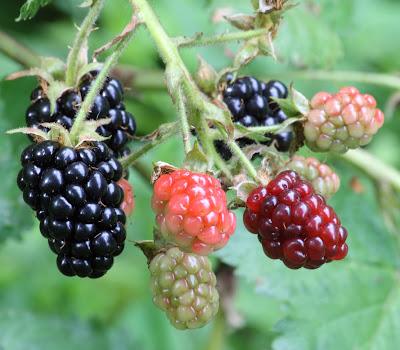
Blackberries in a range of ripeness, each one a cluster of drupelets; by Ragesoss.
Blackberry flower with many yellow-tipped pistils in the center. Each pistil will become a drupelet; together they will be a blackberry. By I, Luc Viatour.
But if we run the mulberry film backward, we're in for a surprise (I was anyway). A mulberry also is a cluster of little fleshy units, but each of these units started as the single pistil of one flower. In other words, a mulberry develops from a cluster of several to many flowers—an inflorescence!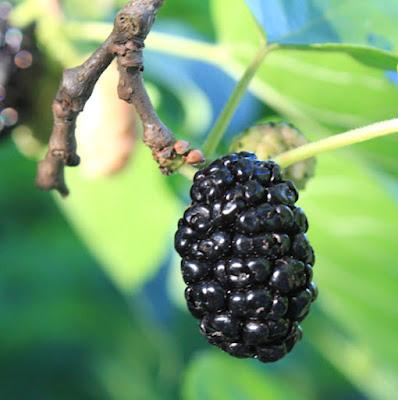
Back to the first photo. It's a mulberry—a cluster of fleshy modified flowers.

Female mulberry flowers, each with a single pistil (two styles at tip); the four inflorescences (clusters) will become four mulberries (Minnesota Wildflowers).
Morus flowers are unisexual (often trees are as well). A female flower contains a single pistil that develops into a small dry fruit (achene), while the outer whorl of flower parts (the calyx) becomes fleshy. The result looks like a drupe but is a modified flower. Fruits such as these—formed from multiple flowers—are categorized following a long and venerable tradition.The great Asa Gray of Harvard University, whose 150-year old system of fruit classification is still in use (because botanists haven't come up with anything better) covered fruits in Lesson 20 of Lessons in Botany and Vegetable Physiology. He started with a brief definition—"The ripened ovary with its contents, becomes the Fruit"—and then immediately addressed an especially problematic situation.
"Some fruits, as they are commonly called, are not fruits at all in the strict botanical sense. ... mulberries, figs, and pineapples are masses of many fruits ... resulting from several or many blossoms, aggregated into one body" (italics mine).
Gray assigned them to the category Multiple or Collective Fruits, as many of us do today (more here).

Asa Gray, "the most important American botanist of the 19th century"; photo from 1870s, source.
Both White and Red Mulberries have been reported for South Dakota. The former, M. alba, is non-native, used for landscaping, and occasionally escapes and persists. Red Mulberry, R. rubra, is said to be native to southeast South Dakota, but so far I've seen no reliable specimens, partly because the two are tough to tell apart.Their names don't help. The fruit of both can range from white to red and is usually black at maturity but sometimes remains white in White Mulberry. Both have edible fruit, but while red mulberries are sweet and delicious, white mulberries are said to be bland.
Leaves are highly variable in shape, ranging from deeply lobed to entire in both species.
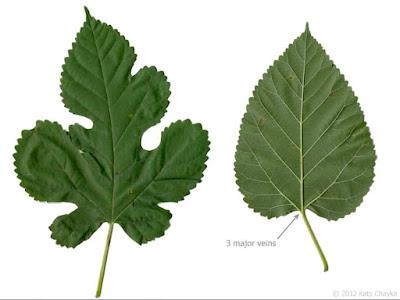
Leaves of White Mulberry, Morus alba, c. 3–4 inches long; Minnesota Wildflowers.
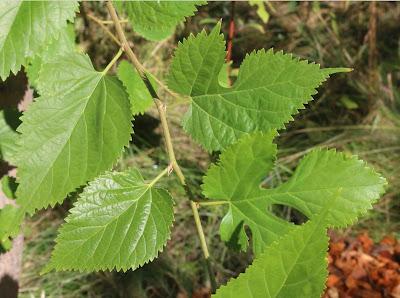
Red Mulberry, Morus rubra, entire and lobed leaves on the same branch! TreeLib.
Flora of North America offers hairiness of leaves as a way to distinguish between the two species (see key to species), but then warn that hairiness is variable in both, perhaps due to hybridization.During my recent trip to southeast South Dakota, I met a mulberry. Whether it was white or red I can't say. If you-the-reader have mulberry identification tips, please leave a Comment below.
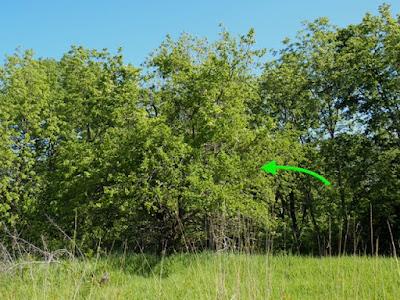
Mulberry tree (Morus sp.) front and center; Union Grove State Park, South Dakota.
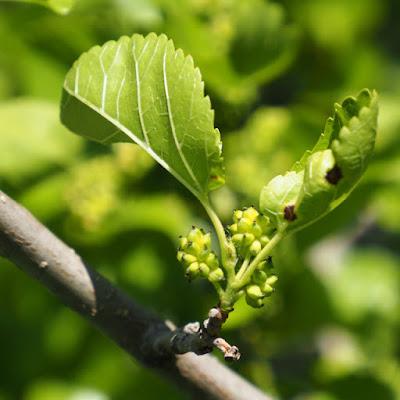
Three young mulberries (clusters of flowers).
 This is my monthly contribution to the gathering of Tree Followers kindly hosted by The Squirrelbasket. It also contributes to a web-based Guide to South Dakota Trees and Shrubs currently under construction.
This is my monthly contribution to the gathering of Tree Followers kindly hosted by The Squirrelbasket. It also contributes to a web-based Guide to South Dakota Trees and Shrubs currently under construction.